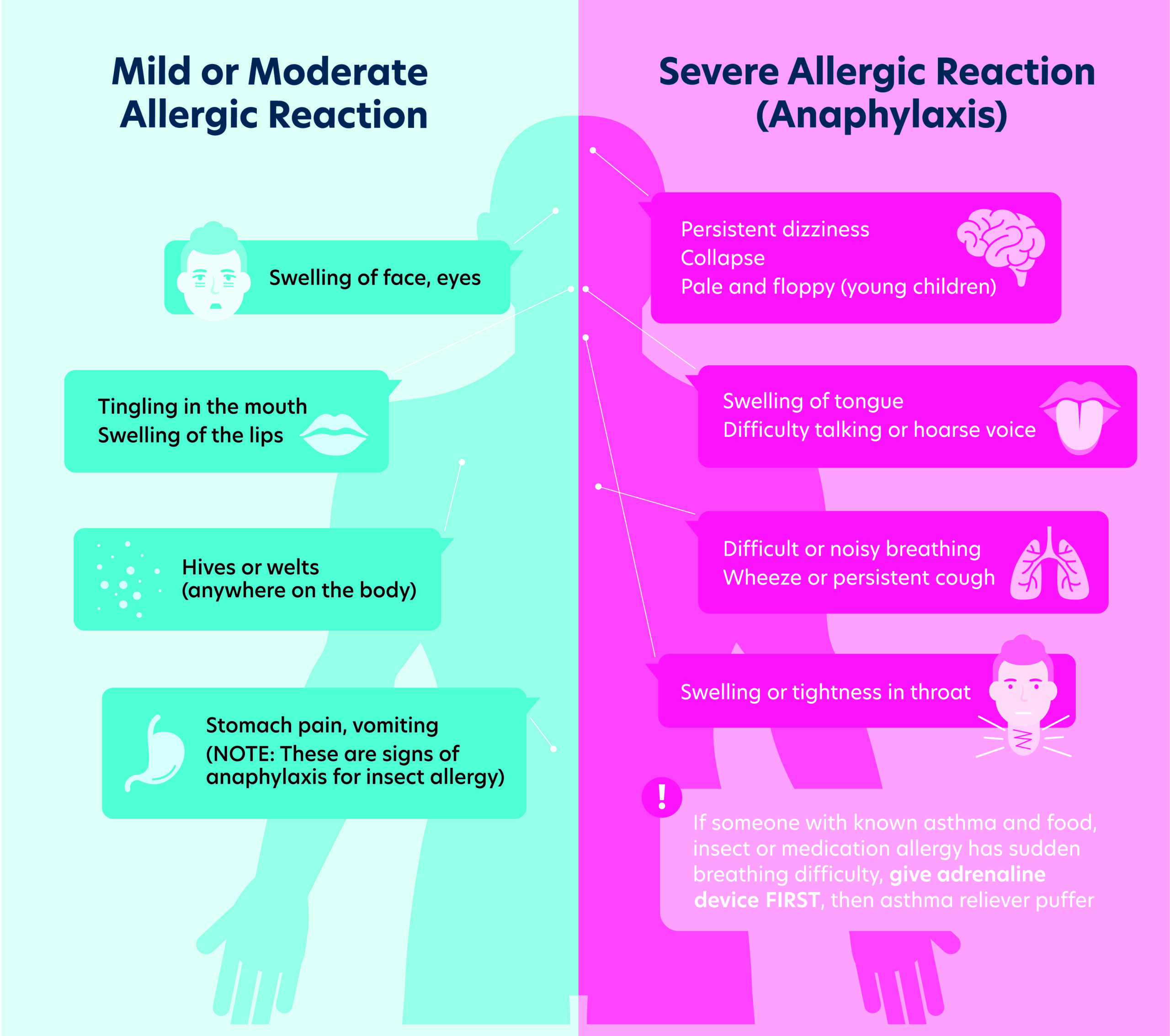Signs and symptoms of an allergic reaction are not always the same. Even if you have had allergic reactions in the past which were similar, it does not mean the next allergic reaction will be the same. The most important thing is to recognise signs of an allergic reaction and follow the ASCIA Action Plan for Anaphylaxis to treat them.
The signs and symptoms of an allergic reaction:
- Usually occur within minutes after exposure to an allergen but can take up to 2 hours to develop.
- Symptoms of an allergic reaction may be mild or moderate at first but can worsen quickly to a severe allergic reaction (anaphylaxis)
- BUT… signs of a mild or moderate reaction may not always appear before signs of anaphylaxis
IMPORTANT NOTE: Not all exposures to an allergen will cause anaphylaxis. Exposure which may cause anaphylaxis includes: eating a food, being stung/bitten by an insect, or taking a medication that the person is allergic to.
Signs of mild to moderate allergic reaction
- Hives, welts or body redness
- Swelling of the face, lips, eyes
- Tingling of the mouth
- Abdominal pain and vomiting (Note: these are signs of a severe allergic reaction/anaphylaxis in someone with a severe insect allergy)
Any ONE of these signs means someone is having a severe allergic reaction – ANAPHYLAXIS
- Difficult or noisy breathing
- Swelling of the tongue
- Swelling or tightness in throat
- Wheeze or persistent cough
- Difficulty talking or hoarse voice
- Persistent dizziness or collapse
- Pale and floppy (young children)
- For INSECT ALLERGY – abdominal pain, vomiting

Anaphylaxis emergency treatment
Emergency treatment guidance – if you or someone you are with is having an allergic reaction now.
Video: signs and symptoms of anaphylaxis
Preparing for an emergency
Learn how to prepare for a severe allergic reaction (anaphylaxis) and what to expect if you or someone in your care experiences anaphylaxis.
